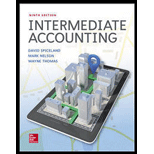
Concept explainers
Goods in transit; consignment
• LO8–2
The December 31, 018, year-end inventory balance of the Raymond Corporation is $210,000. You have been asked to review the following transactions to determine if they have been correctly recorded.
1. Goods shipped to Raymond f.o.b. destination on December 26, 2018, were received on January 2, 2019. The invoice cost of $30,000 is included in the preliminary inventory balance.
2. At year-end, Raymond held $14,000 of merchandise on consignment from the Harrison Company. This merchandise is included in the preliminary inventory balance.
3. On December 29, merchandise costing $6,000 was shipped to a customer f.o.b. shipping point and arrived at the customer’s location on January 3, 2019. The merchandise is not included in the preliminary inventory balance.
4. At year-end, Raymond had merchandise costing $15,000 on consignment with the Joclyn Corporation. The merchandise is not included in the preliminary inventory balance.
Required:
Determine the correct inventory amount to be reported in Raymond’s 2018
Want to see the full answer?
Check out a sample textbook solution
Chapter 8 Solutions
INTERMEDIATE ACCOUNTING (LL) W/CONNECT
 Intermediate Accounting: Reporting And AnalysisAccountingISBN:9781337788281Author:James M. Wahlen, Jefferson P. Jones, Donald PagachPublisher:Cengage Learning
Intermediate Accounting: Reporting And AnalysisAccountingISBN:9781337788281Author:James M. Wahlen, Jefferson P. Jones, Donald PagachPublisher:Cengage Learning Cornerstones of Financial AccountingAccountingISBN:9781337690881Author:Jay Rich, Jeff JonesPublisher:Cengage Learning
Cornerstones of Financial AccountingAccountingISBN:9781337690881Author:Jay Rich, Jeff JonesPublisher:Cengage Learning

